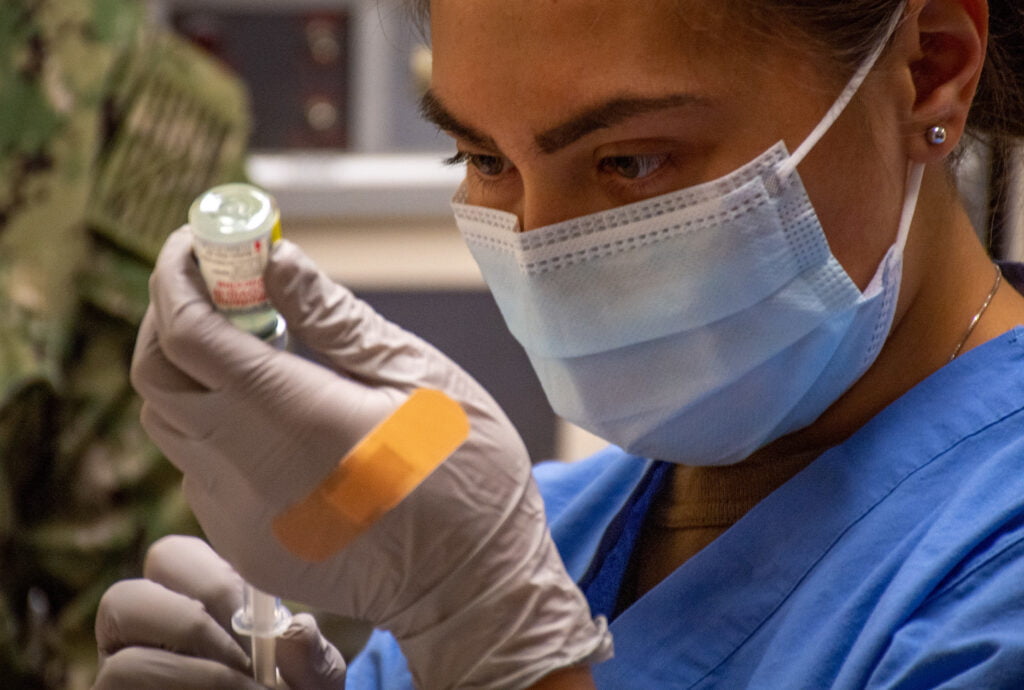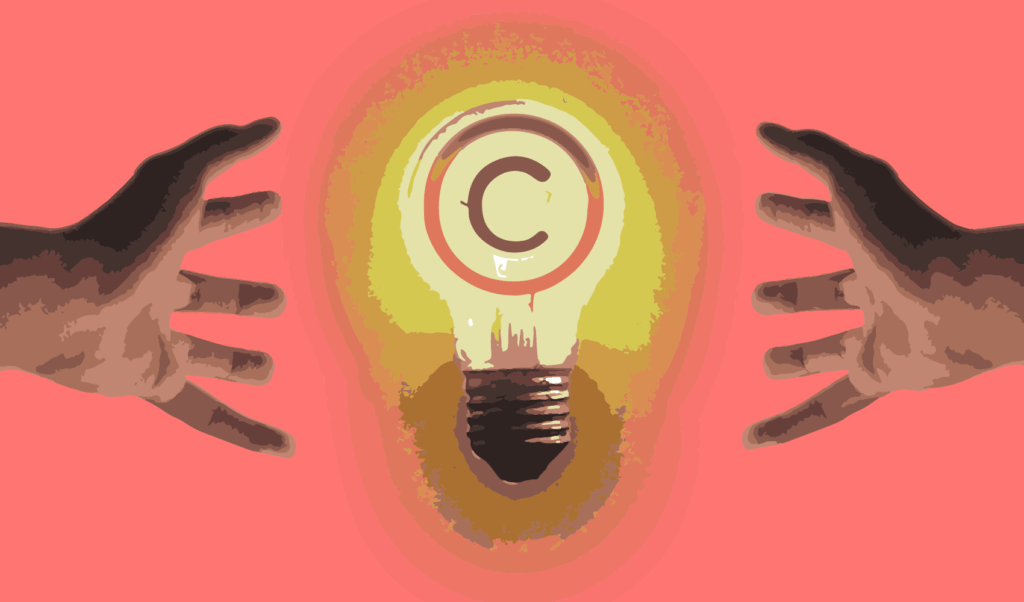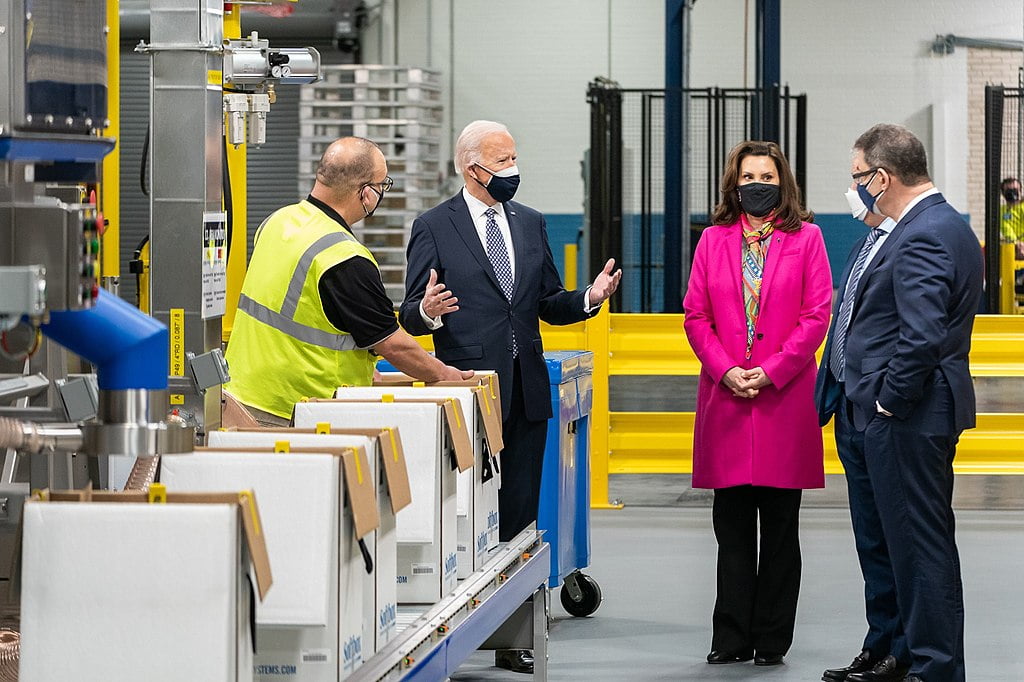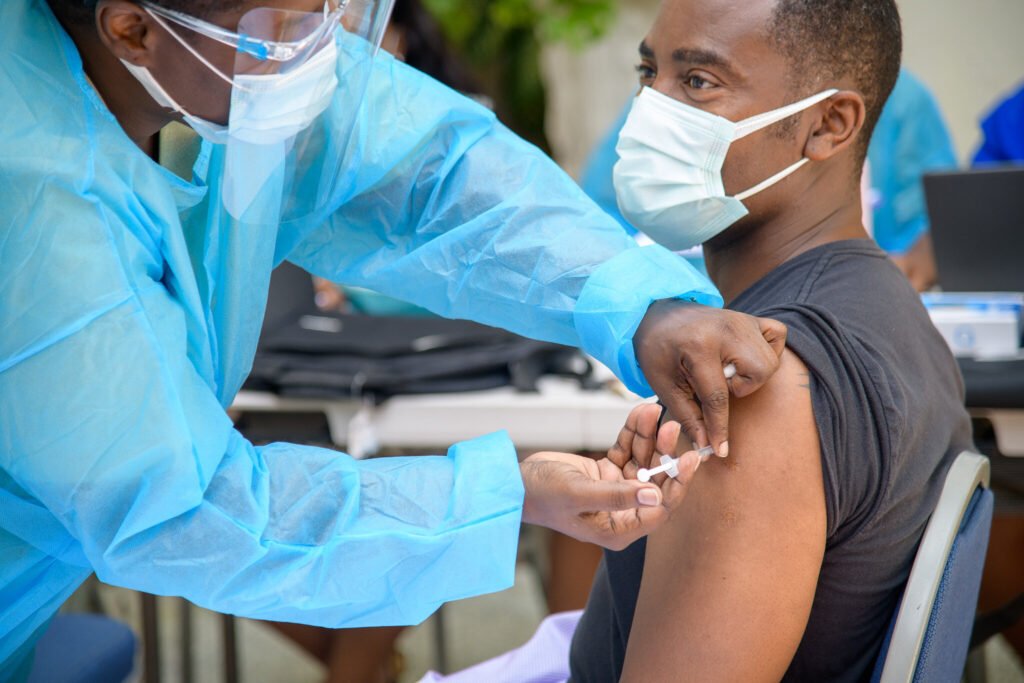Public money directly and indirectly supports pharmaceutical innovation. Governments need to ensure the public gets a fair return on its investment.
 IP disputes between governments and their private-entity collaborators climb to especially high stakes when they are about medicines. : Petty Officer 1st Class Kyle Steckler CC BY 2.0
IP disputes between governments and their private-entity collaborators climb to especially high stakes when they are about medicines. : Petty Officer 1st Class Kyle Steckler CC BY 2.0
Public money directly and indirectly supports pharmaceutical innovation. Governments need to ensure the public gets a fair return on its investment.
A tussle over the ownership of pharmaceutical manufacturer Moderna’s mRNA COVID-19 vaccine remains at a standoff. The National Institutes of Health (NIH), a US government body, says its researchers contributed substantially to the development of the vaccine, giving NIH intellectual property (IP) rights over it. Moderna disagrees.
IP disputes between governments and their private-entity collaborators climb to especially high stakes when they are about medicines. When treatments for HIV/AIDS were developed in the late 1990s, people debated when and how patents could be circumvented to ensure wider access in places where the treatments were most needed. The debate has resurfaced most recently in the context of vaccines for Ebola and then COVID-19.
Parties on either side of the debate have suggested changes to how drug patents should be handled. One argument seeks to capitalise on the internal logic of IP to ensure greater and wider access to the proceeds of intellectual endeavour for solving the most pressing global health crises.
A foundational principle of IP is that the creator whose time, effort, intellectual rigour and material resources went into the development of a product should benefit primarily, and in some instances exclusively, from it. This protects any desire of the creator to extract commercial gain from the sale or licensing of their product or process. This principle has long been upheld as essential to the logic of incentivising innovation and subsequent commercial endeavour.
But this premise has been called into question by innovations that have far-reaching impact and use but are not premised on the need or desire to commercialise them and extract exclusive profit from their use. The internet is perhaps the greatest such innovation in modern history. The research and development of this project, like others of its kind, have to a great extent been supported by public funding, whether directly or indirectly.
The non-exclusionary nature of these innovations, made possible by public funding, has made it possible for them to be used and enjoyed by all without any overt desire by their creators for commercial gain.
Where there is a desire for commercial gain, it’s different. People question who should benefit from the formulation and manufacturing of products intended to be used by vast portions of the populace, as well as how and when the gain is to be enjoyed.
As with many industries, the creation of life-saving medications has been largely driven by companies who embark on research and development with the hope of selling these drugs and earning a profit for the company and its shareholders. There is widespread acknowledgement that these biomedical innovations are both time-consuming and resource intensive, which is why there is acceptance of the principle that having dedicated that time, effort and resources, the innovators should be allowed to recoup what has been invested as well as make a profit. This is so even where the innovation is intended to be used by whole populations for life-threatening health conditions and diseases.
There are many legal and philosophical arguments about how much and for how long profit should be extracted from medical innovations, but these arguments address the scale of the benefit and not whether it is right or wrong.
Arguments about the propriety of commercial gain arise when innovation has not been solely made possible by private intellectual and material resources. The argument may then be that the commercial incentive has been altogether removed. But even where this is not the case, when public resources have largely or totally enabled a rigorous process of research and development, people ask how and when the public benefits from the use of its resources.
Public resources fall broadly into two categories: intellectual and material. Intellectual resources include existing scientific knowledge in the public domain, and material resources include public-sourced funding when a government directly or indirectly allocates resources sourced from the public through taxes and other sources of revenue. As funding for pharmaceutical innovation is increasingly provided by state intervention and assistance, there is a growing demand that the government and the public – in whose interests the government acts – be allowed to benefit from its material contribution. In this sense, the government is a shareholder entitled to its proceeds.
It is then up to the government to determine how the proceeds are to be allocated and enjoyed by the public for which it has acted. This approach to the determination of benefit for IP engages in the granular commercial logic of profit in accordance with percentage of shareholding and the possible means of extracting the value accrued from the profit and dividends. It accounts for the argument that while funding is important, it is not the only element in the kind of cutting-edge research and speed required to create and produce life-saving medication. It assumes the predominant logic that privatisation means the kind of efficiency that may not be possible with government-based interventions bogged down by bureaucracy.
This understanding of public funding of innovation calls for a deeper engagement of the public for whom the government acts and to whom it owes accountability. As the pharmaceutical company owes its shareholders a profit, so the government owes the public the proceeds of investments in innovation it has made on its behalf.
Omowamiwa Kolawole is a sociolegal scholar at the University of Cape Town who studies the right to health and its implications for public health systems and biomedical interventions. His current research examines drug patents and how intellectual property rights may be applied to realise the right to health of all. He holds a PhD in public law as well as a masters in law and another in public health.
Dr Kolawole has declared no conflict of interest in relation to this article.
Main image published under Creative Commons.
Originally published under Creative Commons by 360info™.













